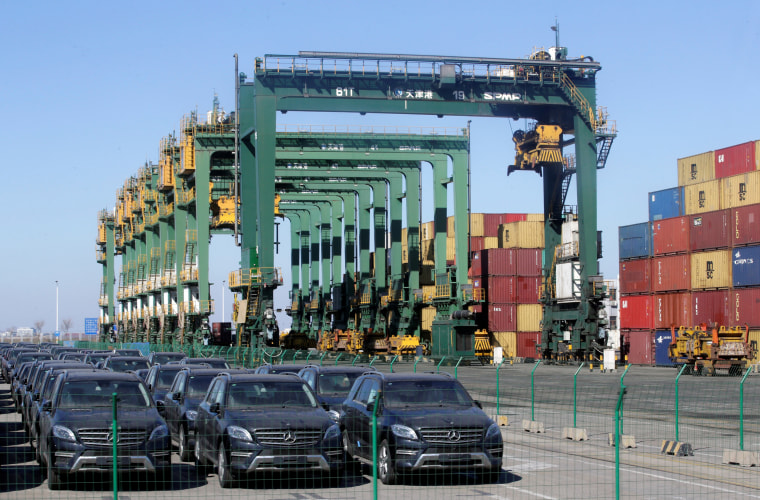Chinese President Xi Jinping held out a carrot for foreign automakers this week — and a potential olive branch to President Donald Trump — promising to “significantly lower” the 25 percent tariffs that have long restricted access to the world’s largest automotive market for imported vehicles.
Xi gave no clear indication in this week's announcement as to how the rollback would take place, but Chinese regulators have been signaling that move for some time, even suggesting last November that tariffs would be eased “gradually and properly.”
However, while the prospect of lower tariffs was generally well received abroad, it would only eliminate one of the severe restrictions that have longed chafed at foreign automotive manufacturers.
“We are encouraged by his (President Xi’s) comments, and look forward to learning more,” Ford told NBC News.
“This is a very important action by China,” tweeted Tesla CEO Elon Musk.
Global dominance
The Chinese automotive market is the world’s largest, with total vehicle sales reaching 28.8 million last year. That was a 3 percent increase over 2016, the lowest pace of growth since the market’s automotive boom began around the turn of the millennium. But that was still notably better than what has happened in the U.S.: Auto sales tumbled about 5 percent last year to just over 17 million, marking the first downturn since the U.S. emerged from the Great Recession.
American and German manufacturers — notably Volkswagen and General Motors — dominate the Chinese car market, but the vast majority of vehicles sold in that country are built locally. All told, imports from U.S. assembly lines totaled barely 300,000 in 2017. And of those, most carried BMW or Mercedes-Benz badges. Only four of the top 10 models shipped to China bore domestic American nameplates.
“The Europeans are the ones who are really going to be jumping for joy,” said John McElroy, a veteran automotive analyst and host of the weekly “Autoline: Detroit” TV show.
McElroy doesn’t expect to see a big boom in exports to China, even if that country matches the current, 2.5 percent duty paid on most vehicles shipped to the U.S. There are a number of reasons, he and other analysts suggest:
- Shipping costs are substantial
- While Chinese labor costs have been going up, they’re still a fraction of what workers make in the U.S., Europe, Japan, and South Korea
- At this point, virtually every significant foreign manufacturer, including VW, GM, Ford, Toyota, Nissan, Hyundai and Honda, have extensive manufacturing operations, at a combined cost of over $100 billion, across China.
That said, setting up shop in China has its own challenges, said McElroy. Reducing tariffs “addresses only a very minor part of the trade dispute.”
China sets its own rules
While most foreign carmakers have the same access to the U.S. when it comes to opening a new plant, like the one Volvo will open in Charleston, South Carolina this year, “The Chinese force a foreign automaker to either find a local partner or you won’t be able to build in that market.” That can take years to negotiate, as Fiat Chrysler found while trying to launch Chinese production for its Jeep brand. And Tesla has yet to get a deal going, so it may have to rely on exports from the U.S.
Once a partner is found, added McElroy, “You’ll have to give (them) half your profits — and they get to learn all your know-how.”
GM, for example, has a web of local Chinese partners, including domestic giant Shanghai Automotive Industry Consortium, or SAIC — which, in the strange-bedfellow world of China’s auto industry, also partners with GM’s arch-rival Volkswagen.
Chinese automakers been swelling their coffers as a result and, in many cases, they’re using the money to develop brands of their own — which essentially means they are funding their own competition.
Domestic Chinese companies aren’t just looking to compete at home. As the country’s double-digit growth rate slows, there’s growing interest in markets abroad. A handful of Chinese products are already reaching the U.S., including the Buick Envision SUV and a stretch version of the Volvo S90 sedan.
The Swedish automaker is now owned by one of the most ambitious domestic Chinese manufacturers, Zhejiang Geely, which has made no secret of its plan to soon enter the U.S. market on its own. And rival GAC is setting up an American dealer network after an appearance at the North American International Auto Show last January. Cutting tariffs on American imports, several analysts suggested, could prevent a retaliatory move.
